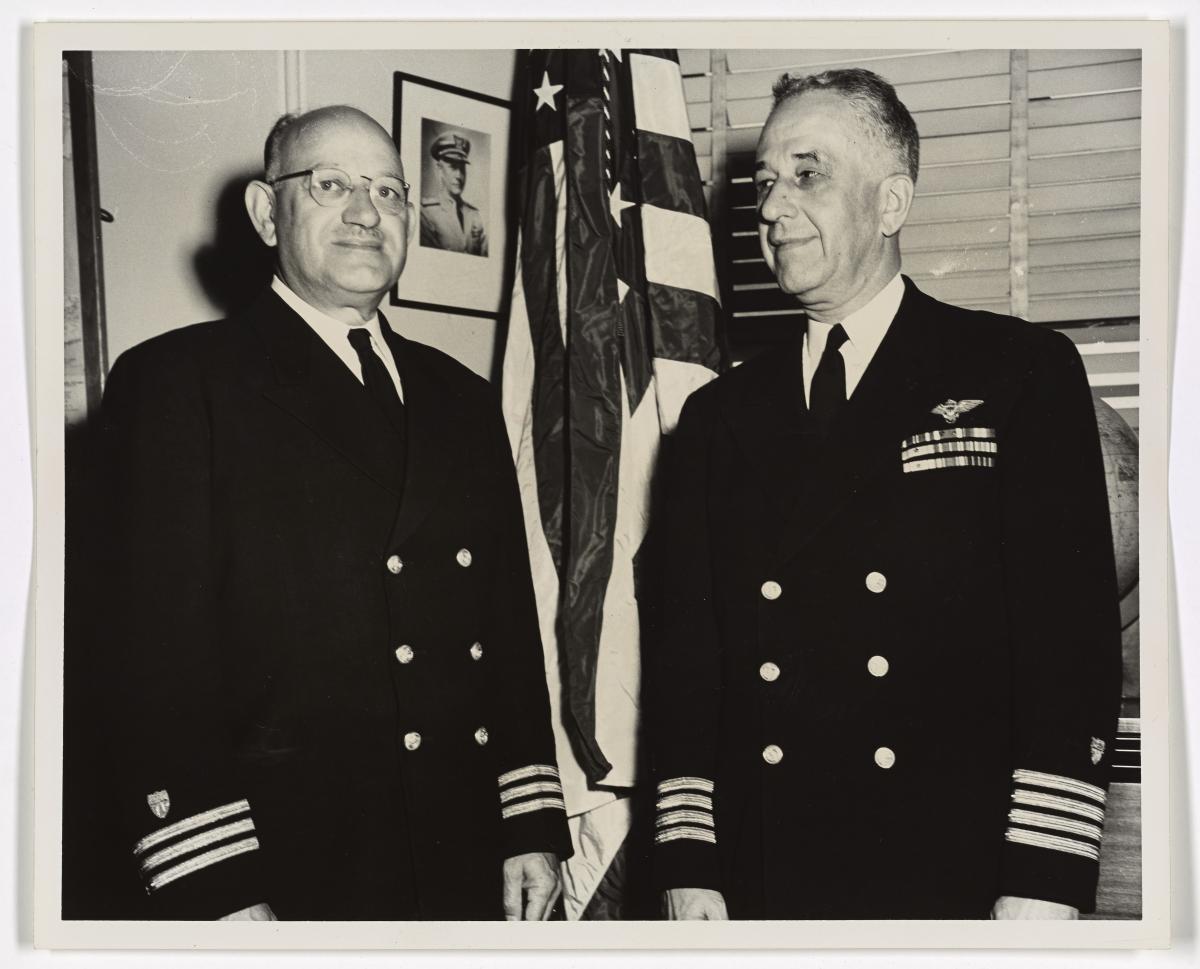
United States Coast Guard Districts and Regional Records
The establishment of the U.S. Coast Guard district system has been an evolutionary process, with district numbers, names, and jurisdictions changing over time. Records relating to U.S. Coast Guard districts are primarily found in Record Group 26: Records of the U.S. Coast Guard and housed at multiple National Archives and Records Administration (NARA) research facilities. Researchers will want to factor in dates, location of event, and record type when attempting to locate U.S. Coast Guard district records.
The U.S. Coast Guard district system was established to provide clear lines of separation when implementing jurisdictional operations. It primarily provides domestic assistance, and therefore has mainly been divided along selective regions of the United States and its territories. (Exceptions to this rule depend on events and situations. For example, during times of war, the U.S. Coast Guard district system merges with the U.S. Navy's District System.) The U.S. Coast Guard’s primary headquarters is located in Washington, DC, while the remaining shore establishments are currently divided into two areas: the United States Coast Guard Atlantic Area and the United States Coast Guard Pacific Area. These areas are then divided into districts, which have their own district (administrative) headquarters.
For more information on current district structures, see:
Historical Overview
The earliest example of the U.S. Coast Guard district system can be found within its predecessor organizations. The U.S. Lighthouse Service (USLHS) district system was established through an Act of Congress on June 7, 1838. When the U.S. Life-Saving Service (USLSS) was established in 1848, they used this system to facilitate their administrative headquarters. By 1881, the USLSS had established twelve districts that acted as the bases for the United States Coast Guard. Though the U.S. Revenue Cutter Service (USRCS) eventually merged with the U.S. Coast Guard, the USRCS did not use the same system. Instead, their organization was divided by their home ports.
As the USLSS, USRCS, and other smaller organizations merged in 1915, the district system was adopted throughout the new U.S. Coast Guard, and the first thirteen districts were established. The districts were divided into the Eastern Area and Western Area. The number of districts and their borders changed over time, including in 1939 when the USLHS joined the U.S. Coast Guard. Today there are only nine districts in the U.S. Coast Guard, and what was formerly referred to as the Eastern Area and Western Area is now the Atlantic Area and the Pacific Area.
Examples of Records at the National Archives
District History
- District Narrative Histories, 1945–1946: These records consist of narrative reports about the history of the U.S. Coast Guard districts. The U.S. Coast Guard primarily used the reports during World War II. (Washington D.C.)
- District Publications, 3/25/1941–12/1998: This series consists of newsletters and newspapers issued by the U.S. Coast Guard district offices, bases, training stations, auxiliary offices, marine inspection offices, air stations, and other units. (Washington D.C.)
- Records of Mixed Boards of Survey, 1939–ca. 1950: This series consists of the board of survey proceedings, which include but are not limited to U.S. Coast Guard districts. (Washington D.C.)
- Photographs of Activities, Facilities, and Personalities, 1939–1967: (Still Picture Branch at National Archives at College Park)
Correspondence
- General Correspondence, 1910–1953: The information in these records covers more than just district-related correspondences and is one of NARA’s more commonly utilized collections for Coast Guard research. (Washington D.C.)
Personnel-Related Records
- Muster Rolls of Coast Guard Ships and Shore Establishments, 1941–1949: Please note that the U.S. Coast Guard districts in this series are listed by state and not numerically. (Washington D.C.)
- The National Archives in Washington, DC, does not hold custody of all U.S. Coast Guard muster rolls; additional muster rolls are located at other National Archives research facilities. Record locations are based on the state where the Coast Guard station or the vessel's home port is located.
- While muster rolls can provide information relating to a serviceman’s location, the actual personnel records, such as the DD 214 and Official Military Personnel Files (OMPFs), are housed at the National Personnel Records Center in St. Louis, MO.*
* To request personnel records, see Military Personnel Records.
Select Finding Aids
- Record Group 26: Records of the United States Coast Guard (Kansas City)
- Field Unit Records, Region V Life Saving Station Logs for the Chicago and Cleveland Districts, 1876–1943 (Chicago)
- U.S. Coast Guard Records at the National Archives at Chicago (Chicago)
- Records of the U.S. Coast Guard at the National Archives at Boston (Boston)
- Customs, Coast Guard, and other Maritime Records (Boston)
- Maritime Records at the National Archives at Atlanta (Atlanta)
Start Your Research
Start by learning how to use the National Archives Catalog. The National Archives Catalog provides details about Coast Guard record series and features select finding aids.
- Tips: To narrow your search, you can conduct an Advanced Search and include the district name in the “Person or Organization Name.” An example of a district name is “Second Coast Guard District.” Researchers may also find districts named after district headquarters. For example, the “First Coast Guard District” can also be called the “Boston Coast Guard District.”
- Please note that the district jurisdictions have undergone drastic changes over the years, which can lead to varying locations of records. Records relating to a single district can be found at multiple NARA research facilities and may be listed under more than one name as district lines were absorbed, discontinued, redesignated, reestablished, integrated into the U.S. Navy during wartime, etc. Therefore, we advise researchers to factor in dates, location of event, and record type when conducting a search. For more information, please contact us.
